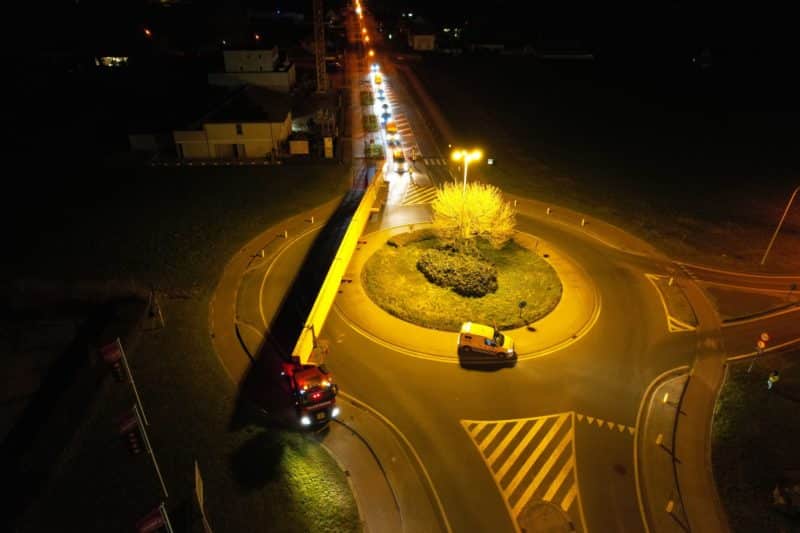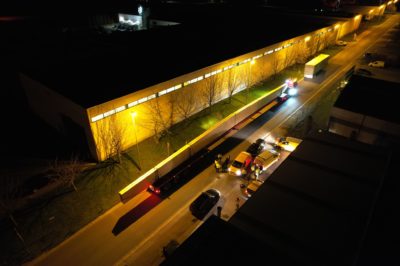Unprecedented in the Benelux industrial construction industry
For phase 3 of this project – the newly constructed transportation hall with loading docks and office areas – the building consultant chose a more architectural solution: 7 whopping wooden trusses.
To support the roof construction, the building consultant decided to use wooden trusses. “For several reasons”, stability engineer Raf Steensels explains.
“On the one hand, for the architectural, aesthetic effect. A wooden beam catches the eye and has a certain natural look. Additionally, the smooth finish of the wood prevents dirt and dust particles to stick to anything. Steel girders have a lot more hooks and crannies, hence, increased dust formation. This is best prevented in the context of a food company. And finally, there’s the shipping aspect: concrete beams would simply be too heavy to transport and lift. Furthermore, it would need stronger foundations.”
In order to realise the span, it apparently required 7 wooden trusses of no less than 45 metres in length. The largest trusses ever produced for an industrial construction project in the Benelux, according to specialised subcontracting company LTS Belgium.
“Although we have advanced experience in fitting wooden trusses in past projects, these dimensions are rather rare. We could thankfully count on the strong expertise of LTS Belgium.”
Night transport
“Most of the communication between the supplier and edibo occurred via de 3D environment of the project. We designed the general construction, the subcontractor added every bolt, every screw, every drill hole to the plans. The point loads too, seen as large cooling units would be suspended from the centre of each truss. Were the trusses able to carry these point loads at their weakest point? These were all scenarios we had to walk through one by one before entering into definitive production.”
“The most difficult part, however, was yet to come: the actual installation on site. Following an impressive night transport, every step had to be meticulously monitored during installation. Starting with the bearing capacity of the columns and the underlying foundations that support the wooden trusses. And also: have all potential obstacles on site been taken into consideration? Will the crane jib be able to twist and turn as needed during hoisting?”
“In short: many conundrums we were able to take on head-first thanks to a strong preparation and an advanced virtual consultation with the manufacturer.”




